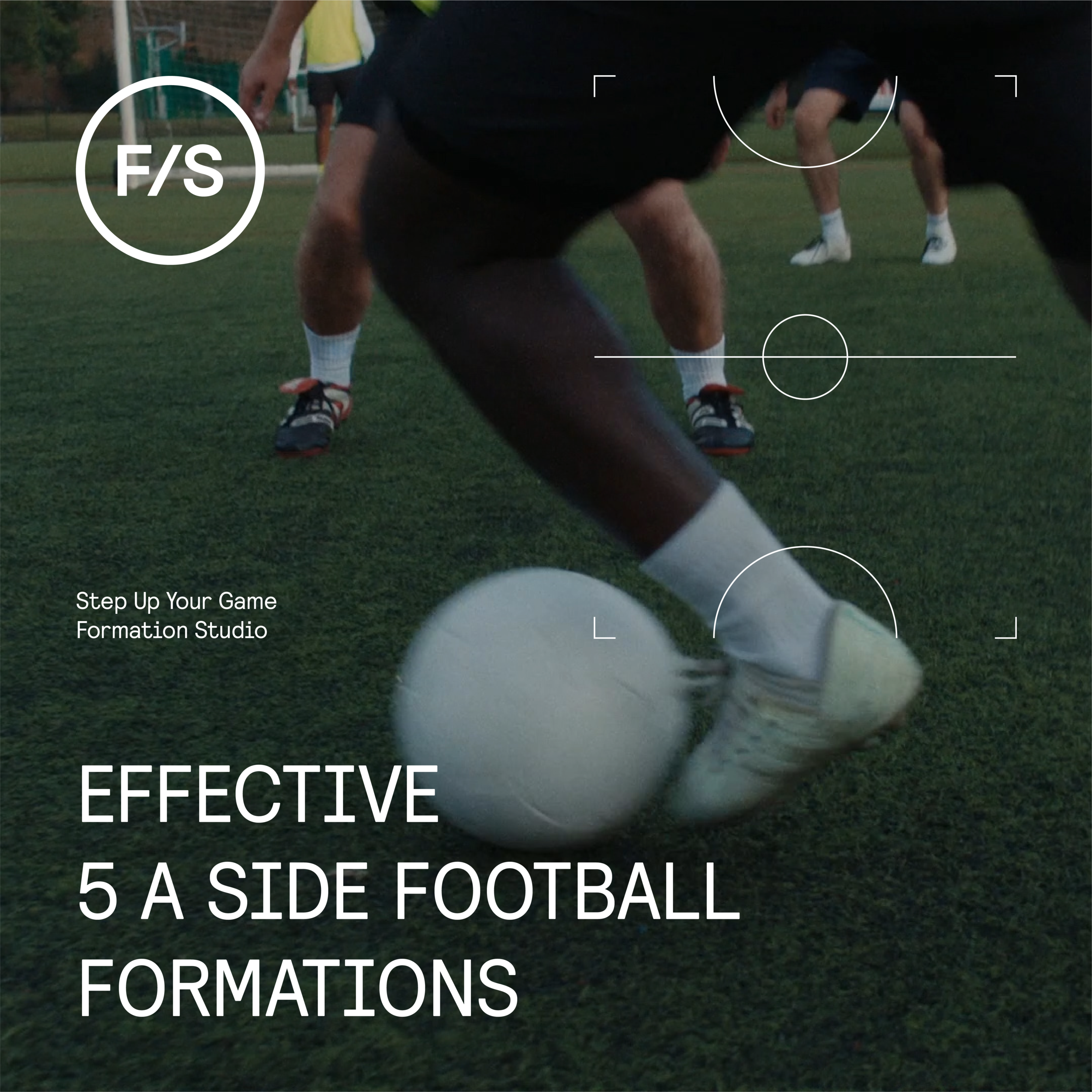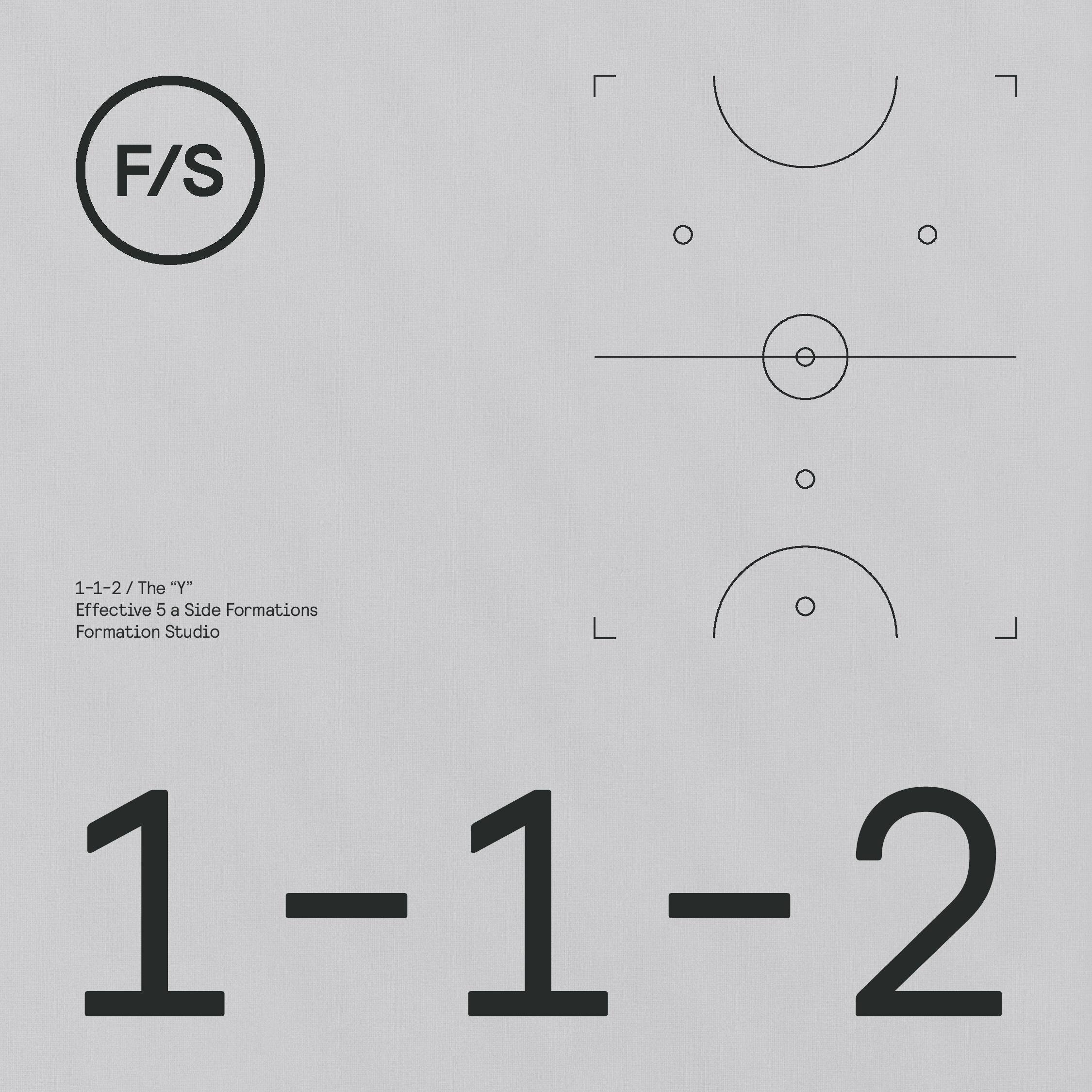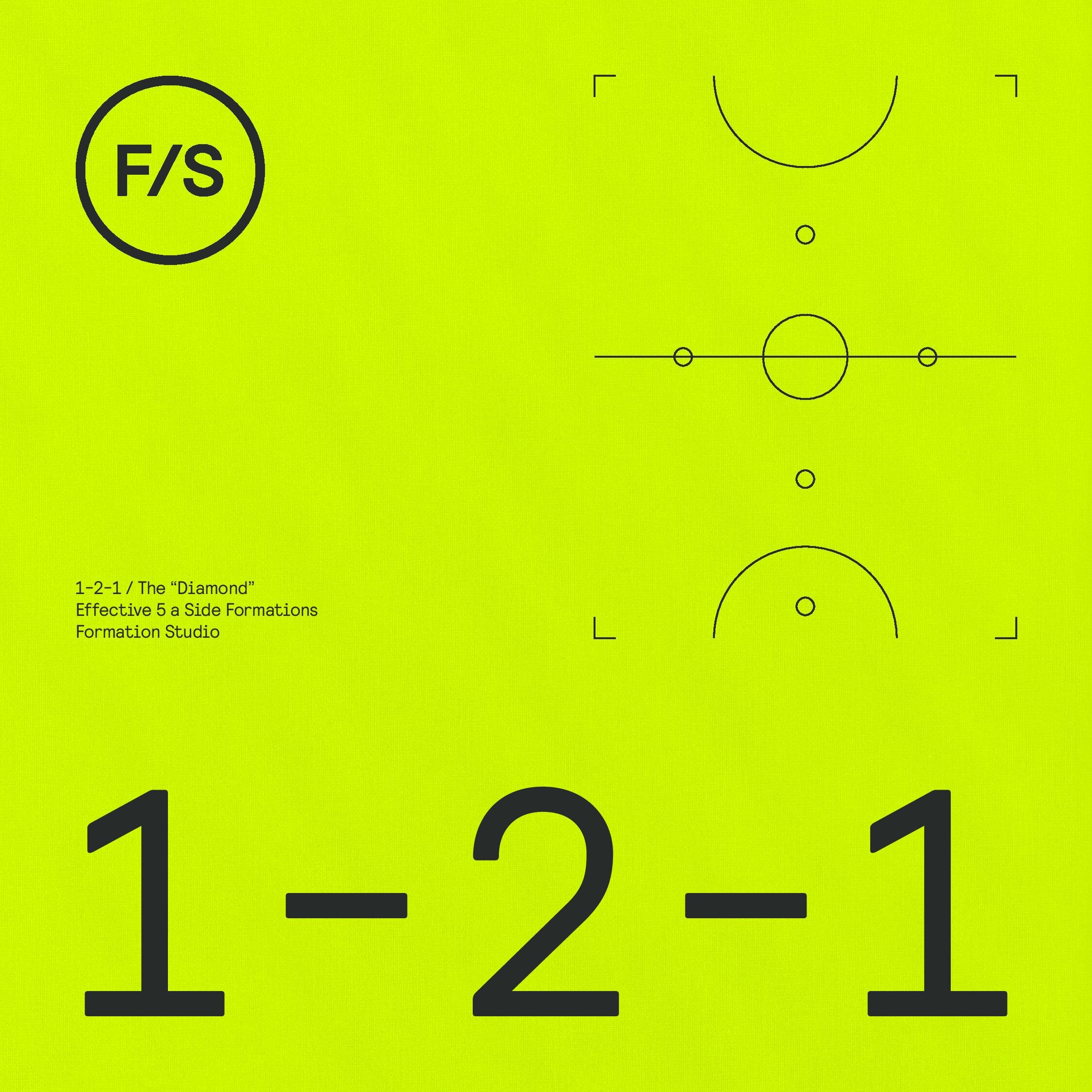Effective 5 a Side Football Formations: Step Up Your Game
You’ve probably left the pitch a number of times thinking “We should have smashed that team... How have we walked away with a loss?”
This is a common result that happens way too often in 5 a side games - regardless of the fact your team had the better players.
So why did you walk away with that unexpected disappointment? What’s the reason you missed the win?
Formation.
Okay, it’s true that skill and speed play their part in your team’s success, but it’s the strategy and tactics that will set you apart and bring in those wins.
A ‘total football’ style is often adopted in 5 a side; this is where players switch between positions throughout the game, usually due to the size of the pitch and number of players. If your team is running with this play, be aware that you’re setting yourself up as easy prey for the team who have got themselves organised.
Sound planning, good organisation and playing smart is what will give your team the strong upper-hand - which is exactly why you need to start thinking seriously about your formations if you want to start walking away with more victories.
Fortunately, you’ve landed on this post. Below you’ll find some of the most effective 5 a side football formations, when to use them and a couple of advantages and drawbacks for each.
Trying out the ones that are a good fit for your team will help bring that winning organisation and structure to send you to the top of your game.
Back to the Basics
Now you know the importance 5 a side formations have on your team’s success, it’s time to start thinking about which you’re going to adopt.
There are many factors your team should consider when deciding on formations, but the below are the important basics you most definitely need to be thinking about before choosing:
What type of players you have in your team
The fitness levels of each player
What you know about the team you’re playing against
However, bear in mind that whichever formations you decide on, there should be 3 very simple foundations that remain key:
1. One player has to be committed to attacking:
Someone needs to provide an attacking outlet to relieve the pressure from the defence.
2. One player has to be committed to defending:
Teams often fall apart because there’s no dedicated player who stays back to keep things tight in defence.
3. There needs to be a specialised goalkeeper:
If you’re really serious about taking your 5 a side game to the next level and bagging as many wins as possible, you’ll need a specialised keeper covering the net.
This may seem like we’re stating the obvious, but it’s all too common to see teams play with no players attacking or too many pushing forward leaving the defence non-existent.
If you’re playing against a good team and neglect any of these basic foundations, you’re probably going to be walking away with your head in your hands yet again.
With there being only 4 outfield players, the good news is that there are only a select number of ways to arrange your team. So, without further ado, let’s cover the 5 a side football formations that are going to help you step up your game.
5 A Side Football Formations:
2-0-2 / THE BOX / THE SQUARE
The Box is the most commonly used 5 a side football formation. Also known as the Square or 2 Up 2 Down, it’s the equivalent of 11-a-side’s 4-4-2 formation; rigid, reliable and can be used effectively by most teams.
This formation is a great choice if you’re just starting out or your team has a mixture of experienced and inexperienced players.
It provides balance by splitting your four players into the two simple areas of responsibility; defence and attack. Although two players are encouraged to push forward and to stay back, some flexibility in these roles will be required as the defence will need to help the attackers and vice-versa.
When to use:
The Box is great for keeping things simple and could work well if things are flexible whilst maintaining the clarity of attacking and defending roles during play.
It’s likely there will be times when you’ll have one or two players who are less experienced than others in the team. This formation gets them involved so they can be part of the squad whilst keeping a competitive edge.
Advantages:
Provides balance between attacking and defending.
Should ensure that the defence and attack has at least some support at all times.
Players always have a teammate alongside them as well as one in front or behind, making it easy for players coming in and out of the team to adapt to their position
Drawbacks:
This formation can be very easy to read, which means you may get too predictable if you follow rigidly
Can be defensively weak if defenders join the attack and attackers are unwilling to get back and defend.
If your team has little experience playing together or a lack of communication, it can be unclear which of the attackers should support the defence and which defender should support the attack.
1-1-2 / THE ‘Y’
This is one of the riskier 5 a side football formations.
The ‘Y’ is a heavy attacking formation. The aim is to get possession of the ball as high up in the pitch as possible and then maximise on this.
If you decide to play this consistently, you’ll want to make sure you score a lot of goals. Reason being that unless the opposition is much weaker, the play of keeping two players in attack will mean conceding a fair few goals. You’ll need to make sure your centre-half is competent in breaking down attacks in order to minimise goals from the opposition.
The floating midfield role needs to be fast, fit and be prepared to track back to lessen the centre-half’s exposure. They also need to take the opportunity to support the two forwards to outnumber the opposition defence.
When to use:
The ‘Y’ is a great formation to play against a weaker team. It’s also highly effective when you want to maximise goal difference and not just gain points.
If you see the opposing team using The Wall formation, now would be a great time to play The ‘Y’.
Advantages:
It’s a very offensive play
This formation leaves one player at the back as last man, which should mean confusion-free responsibility for defending.
Great for being played with a high pressing game.
Drawbacks:
When on the defence, if the attackers are not committed to getting back and won’t play the pressing game, your defence may become vulnerable as there’s high risk of exposure.
There needs to be a lot of adaptation for defending against good quality opposition
Extra tip:
There will nearly always be 3 players required to defend, so consider transitioning into The Diamond or The Pyramid when you don’t have the ball.
3-0-1 / THE WALL
As the name suggests, The Wall is an extremely defensive strategy.
The 3 defenders will be responsible for taking the hammering from the opposition and putting through balls to the striker who can attempt a counter goal.
It’s unlikely you’ll be scoring tons of goals, but this formation can be effective when trying to protect a lead (or prevent a hammering if you’re against a much stronger team!).
Using a single attacker who is creative, strong and able to give the opposition defence a hard time will be essential for maintaining an offensive reach and relieving some pressure from your defence players.
When to use:
This is the formation to use if you’re playing against a strong team or you’re ahead on goals and don’t want to get too greedy.
It could be a good idea to adopt The Wall for certain periods in the game rather than making this the team’s default formation.
Advantages:
Great formation to play if your main strategy is needing some strong defence
Drawbacks:
You may not see too many goals for your side.
Your attacker needs to be willing and able to take on attacking duties on their own
1-2-1 / THE DIAMOND
If you feel you have the perfect team with everyone doing a good job at their role, this highly adaptable Diamond formation is one you should adopt. It works well if the players stick to the clearly defined roles during all periods; there’s 1 defender, 2 midfielders and 1 striker.
The key to this formation is the midfielders who need to be fast, fit and swift to respond to changing phases of play. They’ll be doing most of the running, so it’s a good idea to have a couple of equally good subs on the bench.
The two midfield players are there to support both the centre-half when defending and the strikers in possession, which can help the team adapt the formation to what’s needed most at any moment in time.
When to use:
The Diamond is a good formation to keep your options open. It’s also great if you have a couple of subs on the bench to refresh your midfield positions to maintain the pace of the game.
Advantages:
Two supporting mid-fielders makes this play incredibly strong in both attack and defence
It’s a highly adaptable strategic formation
The Diamond is an effective method of responding to the opposition’s strengths and weaknesses during the changing phases of play.
Drawbacks:
There’s a risk of your midfielders being caught out of position, which means the defender might be the last man standing.
It requires some serious discipline from the midfielders to make sure they don’t focus too much on attack, leaving the defence badly exposed, or too many players in defence when it’s time to attack.
There are a lot of expectations from the midfielders - it’s essential these players are fit, mobile, and able to develop a good partnership so they know when it’s necessary for them to sit-back and defend
Extra tip:
If you feel like your team isn’t quite ready to be responsive enough to changing phases of play but feel attack is the best form of defence, we recommend the offensive Y-Shape formation.
1-0-3 / THE HAIL MARY
Be prepared for a high-scoring match if you’re going ahead with The Hail Mary - this one isn’t for the faint-hearted.
Three players will act as advanced forwards with one defender, making it heavily reliant on high pressure in the attacking half
The objective is to not let the ball enter the defensive half as it will leave the solitary defender seriously exposed.
The players on the left and right of the pitch should be able to quickly assist the defender in the event of an opposition attack. They’ll need to constantly attack, defend and apply pressure, so making sure these are your fittest and most versatile players is a good shout.
When to use:
Unless you’re confident you can outscore the opposition, you might want to hold off playing this one for long periods of the match.
This formation can be a last ditch effort to save a game when there seems to be no other options. It’s a high risk/high reward play, so you’ll only want to use this to go for a last minute equaliser or win in a do or die scenario.
Advantages:
If played right, it could help you walk away with a result your team is happy with
Drawbacks:
There’s a high chance the defender could be left exposed, which could increase the chances of a hammering
2-1-1 / THE PYRAMID / THE COUNTER
The pyramid is more of a defensive line up with 2 defenders and can be highly effective.
There’s one outright striker and one midfielder who supports the attacker, as well as being prepared to perform some defensive duties.
The floating midfielder is key to providing the link-up between defence and attack. They’re there to pick up the opposition’s third man in defence and provide support to the attacker on the counter-attack - so make sure your fastest and fittest play this position.
As well as a strong defender, you’ll need a powerful and effective attacker to convert.
When to use:
We believe this is one of the most effective 5 a side football formations.
It’s best played with stronger teams, especially when utilised with a counter attacking style.
Advantages:
This play frees up one outright striker who can then concentrate on attacking – often referred to as the ‘pivot’
The midfielder is likely to give the defence more support than in the 2-0-2.
It gives the two defenders confidence to make runs forward in the knowledge they’ll be supported by the midfielder.
Having two defenders makes it clear that if one goes forward the other should be sitting back.
Drawbacks:
The two defenders cannot simply rely on the midfield player to do all the attacking.
The midfielder will need exceptional stamina to support both defence and attack.
The Next Level
We know that 5 a side football is mostly played for fun, but if you’re wanting to step up your game even further and give yourselves a competitive edge, you’ll want to read the following points to help you score those wins.
LEARN & PRACTICE
To give yourselves the upper hand, make sure that you learn each of the formations listed in this blog post and practice them.
It’s likely you’ll have a base formation that suits the style and skills of your team, but knowing these 5 a side football formations like the back of your hand will allow you to adapt quickly to changes in play and any unexpected circumstances that arise.
USE THE FIFTH PLAYER
When playing on a smaller pitch with less players, the rules of basic and effective football seem to get forgotten about. This doesn’t have to be the case.
Preventing the opposition from scoring is just as important in 5 a side football as it is in 11 a side, and one way to make sure this doesn’t happen is doing what you can to maintain possession of the ball.
So how do you do this in the fast-paced game of 5 a side? Use the fifth player.
Using your keeper as though they were a centre-half, recycling the ball when a play breaks down, or if the movement pre-play isn’t strong enough is a great tactic for your team to implement.
It does come with its risks though, so you’ll want to make sure your keeper is a competent footballer as this is definitely an advanced method to play.
CHANGE IT UP
Playing the same old tactics week-in, week-out might work for some teams. And that’s completely fine if that’s what they want to do.
But the difference with those teams who win consistently is their ability to change their system when things aren’t working out for them.
It also brings some variety to games and allows you to become more flexible as a team.
Share your thoughts & experiences
We hope this blog post helps you to walk away with more wins and these 5 a side football formations help your team become more organised.
Whether you’ve already tried these out, or you’re yet to give them a go, we’d love to hear from you in the comments.
Which formation does your team find most difficult to play against?
What works for you & your team?
What extra tactics help you and your team win?
And good luck!









